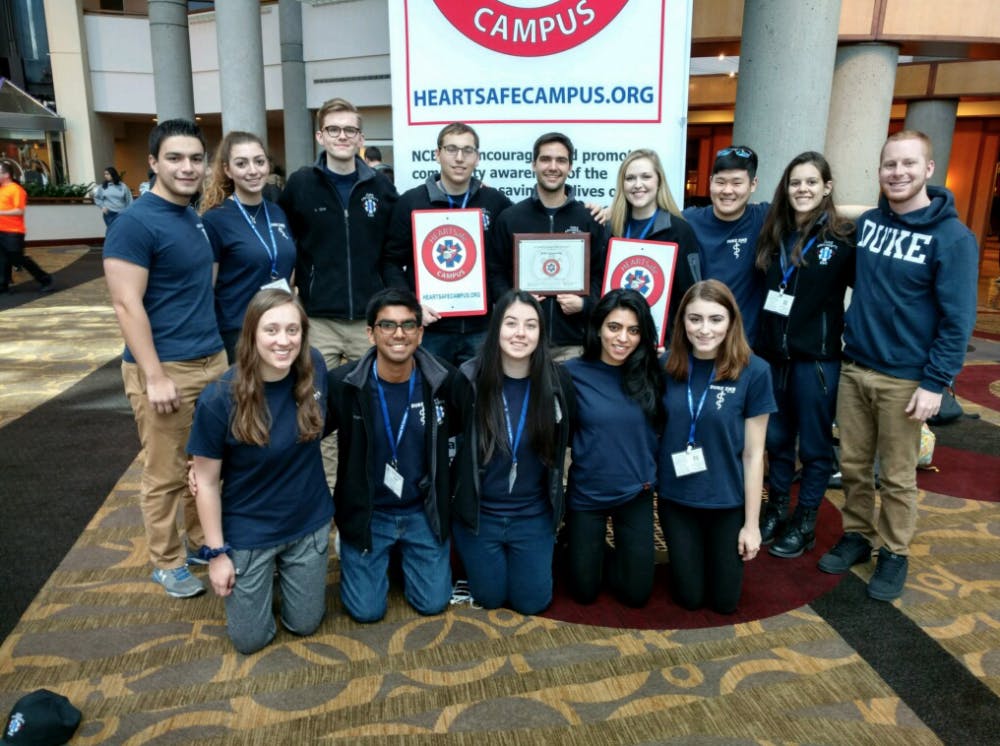If you ever find yourself needing CPR or an AED, Duke’s campus is good place to be.
Duke was recently designated a HEARTsafe campus by the National Collegiate Emergency Medical Services Foundation, thanks to efforts by Duke Emergency Medical Services.
This award was created in 2013 as a way to encourage colleges to promote the importance of CPR and early defibrillation as life-saving techniques. To receive the status, Duke EMS had to meet certain standards for their efforts to train the Duke community on CPR and AED techniques and to make AEDs accessible on campus, among other requirements.
“[The designation] means that we’re ready in basic cardiac emergencies and able to prevent them,” said sophomore Spencer Flynn, external coordinator for Duke EMS.
In their application, Duke EMS had to specify how their organization functioned on campus including how it partners with Durham County, how the local police force is involved with their efforts and how they are connected to Duke’s medical center, Flynn explained.
He noted that in the past calendar year, Duke EMS has trained approximately 1,100 students in CPR and AED techniques as well as in the Heimlich Maneuver, which contributed to their winning the award. Only 24 other colleges in the U.S. have been designated HEARTsafe campuses.
Duke EMS staff members were thrilled to receive the award, Flynn added.
“Just to see it all culminate in recognition is amazing,” he said. “I think it's cool because it supports that what we’re doing is the right stuff and can save lives.”
In the future, Duke EMS hopes to train even more people in CPR. Ideally the number of students with this skill would be a lot higher than 1,100, Flynn noted, which would make Duke a safer campus.
“There’s a ton of evidence that bystander intervention in CPR is extremely important,” he said.
The organization also plans to do more community outreach in terms of cardiovascular and dietary health and will work to keep growing as an organization. Currently, there are around 30 members of Duke EMS who contribute approximately 20 hours each week, Flynn explained.
In the past year, Duke EMS specifically targeted athletic teams and fraternities for training, which they can do in about 30 to 45 minutes. Now, they aim to train other groups on campus including selective living groups, independent houses and sororities.
Flynn explained that the CPR training program has taken off since Duke EMS saved the life of George Grody, professor of markets and management, when he went into cardiac arrest in Perkins library in September 2015. Since then, Grody has become Duke EMS' advisor and helped stage several large scale CPR trainings.
But Duke EMS must continue their efforts, especially because they have to reapply for the HEARTsafe campus designation every three years, Flynn added.
“You don't want to just be a HEARTsafe place for a year,” he said. “You want to be a HEARTsafe place forever.”
Get The Chronicle straight to your inbox
Sign up for our weekly newsletter. Cancel at any time.

